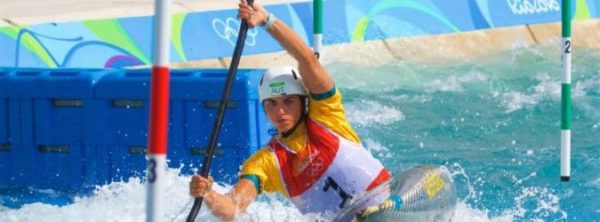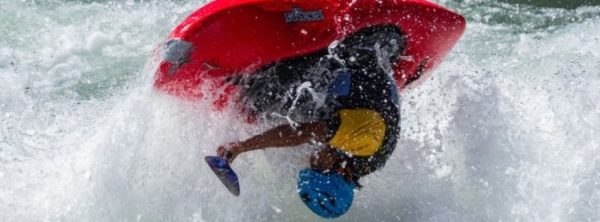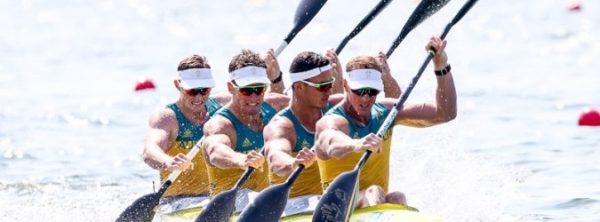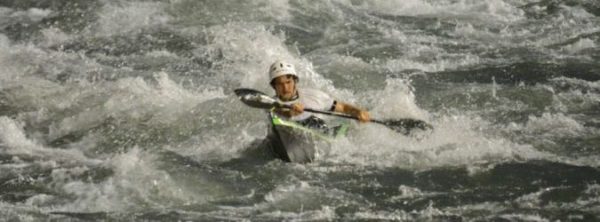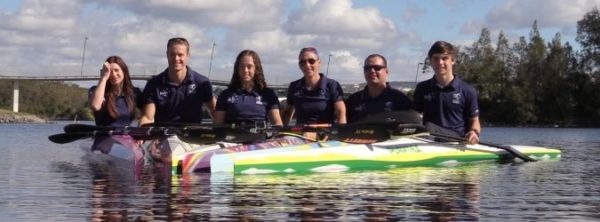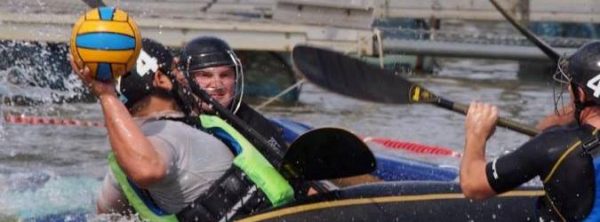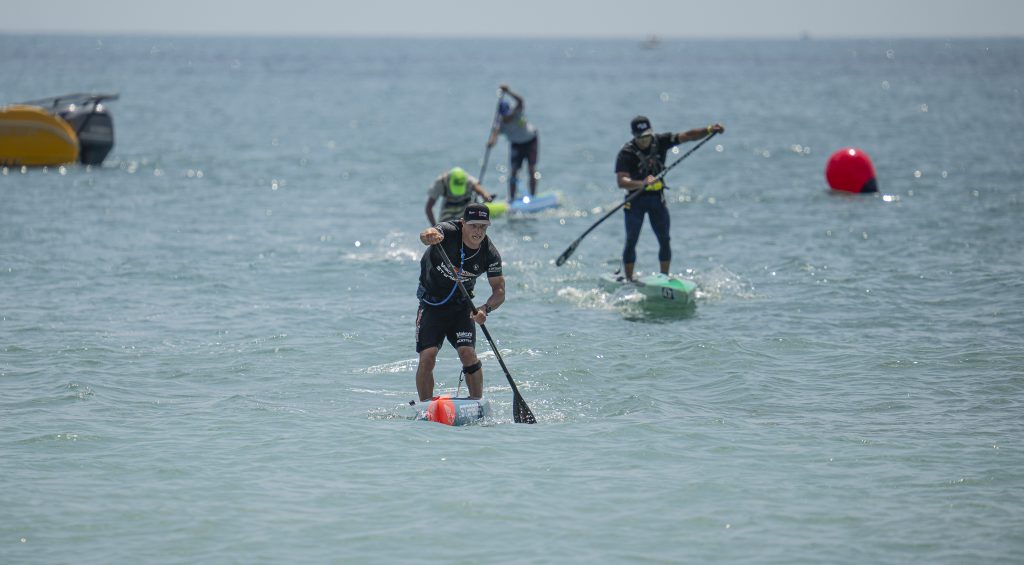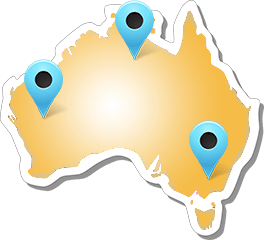One of the oldest canoe clubs in Australia, Fairfield Canoe Club, celebrated 100 years of paddling on the River Yarra this year. Since 1919, FCC has witnessed the evolution of the river, the effects of the Depression, two World Wars, and the Melbourne Olympic Games, all of which have had an influence on the Club and its members.
Read more about the history of the Club below.
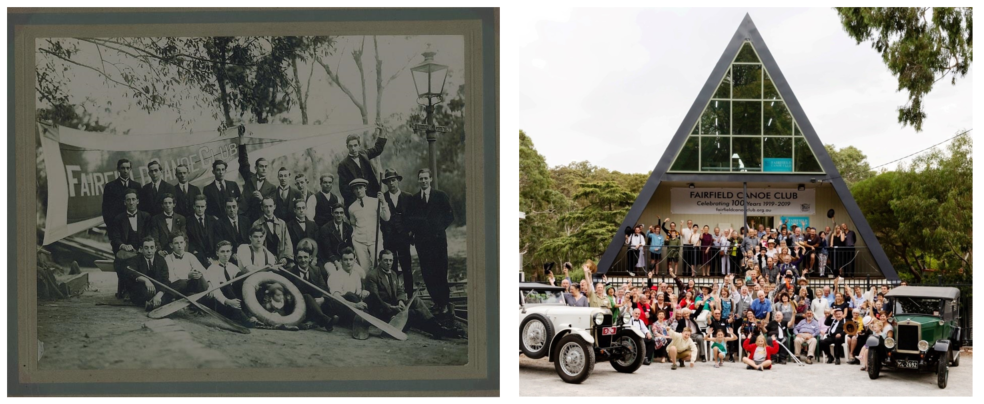
The Beginning of Fairfield Canoe Club
In A Brief History of Canoeing in Victoria, Arthur Howard writes:
“It seems that the war eased the class barriers as those that didn’t go to the war and the returned men got on very well together in this club (Boomerang Canoe Club), canoeing up river on picnics and to the “Ryver Brink Cafe” for meals and the popular Saturday Jazz nights, also canoe racing and novelty events that Edmund Cooke the Proprietor at Rudder Grange organized from time to time to entertain his cafe patrons. These Boomerang Canoe Club men liked to have a drink and started to bring it down to Rudder Grange, it was one of Cooke’s policies that no alcoholic drinks be on the premises, he asked the club members to mend their ways or take their canoes and leave. Fourteen decided to leave, packed their gear in to their canoes and paddled downstream to the Fairfield Park Boat House, known then as “Willow Dell”, where canoe storage was available. Within weeks of leaving Rudder Grange they established a new club, the Fairfield Canoe Club on March 1919 this being their headquarters for several years.
“At ‘Willow Dell’, the FCC headquarters in Fairfield Park, they started interclub canoe racing and had their first canoe carnival, and they also travelled to other clubs venues for club racing. Canoeing was primarily a summer sport. It was from the annual carnivals that the FCC organized and when the public came to watch they sometimes gained members. After a very successful carnival in February 1921, some of the members had a little too much to drink and the proprietor of the Fairfield Boathouse closed the club room but not the canoe storage to members of the FCC.”
From these beginnings the Club moved on, firstly purchasing a river frontage block of land in 1924, just upstream from their temporary rooms at Fairfield Boathouse. Then the club members slowly constructed a substantial clubhouse themselves at 9 The Esplanade, Alphington. The first sod being turned in 1925.
The 1920s
Subsequent progress was described in the newspapers of the day.
The Age, 19th November 1926:
“The Fairfield Canoe Club is proceeding with the erection of a large boat house on the banks of the Yarra River at Fairfield. The club is in a strong financial position. And owns land purchased at a cost of £250. The boat house is being erected by means of working bees, and it is expected that it will be ready for occupation before Christmas. Provision is being made for a large number of canoe racks, and a dance room will be erected on the first floor.”
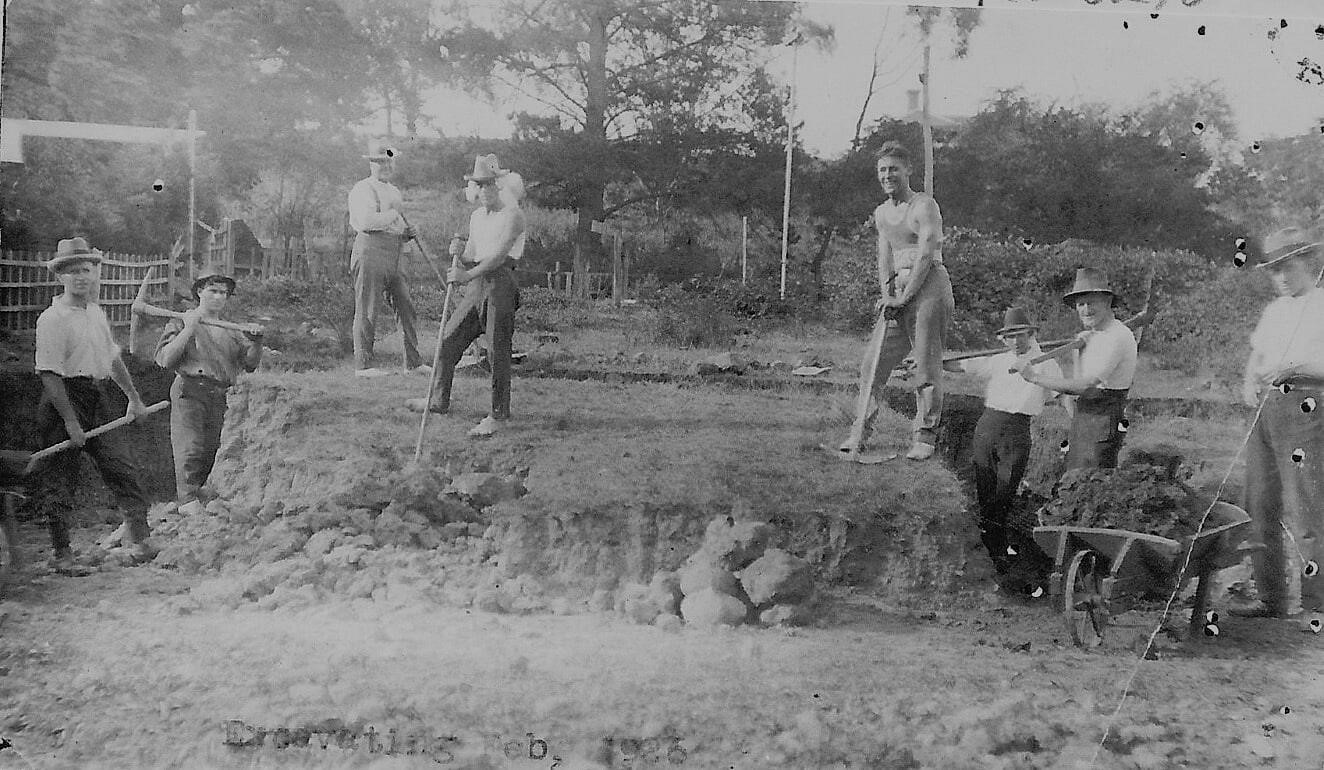
The clubhouse was finally completed, about two years later than anticipated, with The Heidelberg Advertiser, April 1928, reporting that it “was a splendid effort by the members when you consider that the construction was done with voluntary help and not one penny spent on labour. The work, with a few exceptions, was done on Saturday afternoons.”
The slowness was also, in part, due to the Club Secretary insisting that FCC support the newly formed Victorian Amateur Canoe Association races held on Saturdays! It just-so- happened that he, Harry De La Rue, was also Secretary of VACA from its inception in 1920. Club members enjoyed great success over the many years of this competition.
The 1930s
The halcyon days of canoeing did not persist and in 1933, in part due to the Great Depression, the club fell on hard times. Rather than disappearing, they joined a local community initiative to create the Northern Districts Rowing Club (NDRC) which would share their clubhouse facilities. This move brought an injection of funds that expanded the boat storage of the clubhouse, salvaged flagging membership and thus saved our Club. NDRC later became the Heidelberg City Rowing Club; their crews successfully competed out of our Clubhouse until 1948 by which time the enthusiasm for rowing had fallen away. The Weekly Times notes that “a racing and a practice eight were sold to Warrnambool RC”, no doubt to help ease another FCC debt burden and marking the end of the rowing club.
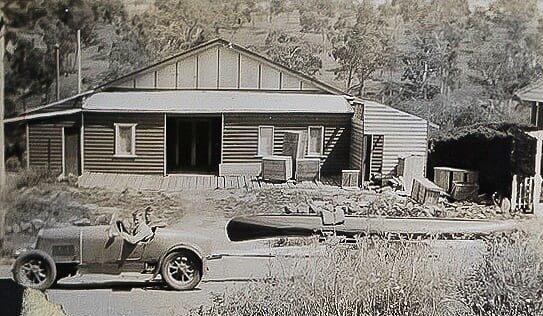
1934 Floods impact on Clubhouse
Our wonderful clubhouse, proudly completed in 1928, as “the only canoe sheds built out of reach of flood water” came under severe threat on 1st December 1934, when more than 140mm rain fell in 48 hours creating these record floods; 36 people died, 400 buildings damaged and 6000 people made homeless. A single lake being formed that extended from South Yarra to Warrandyte.
The clubhouse was well and truly flooded despite its superior position above the ‘floodline’!
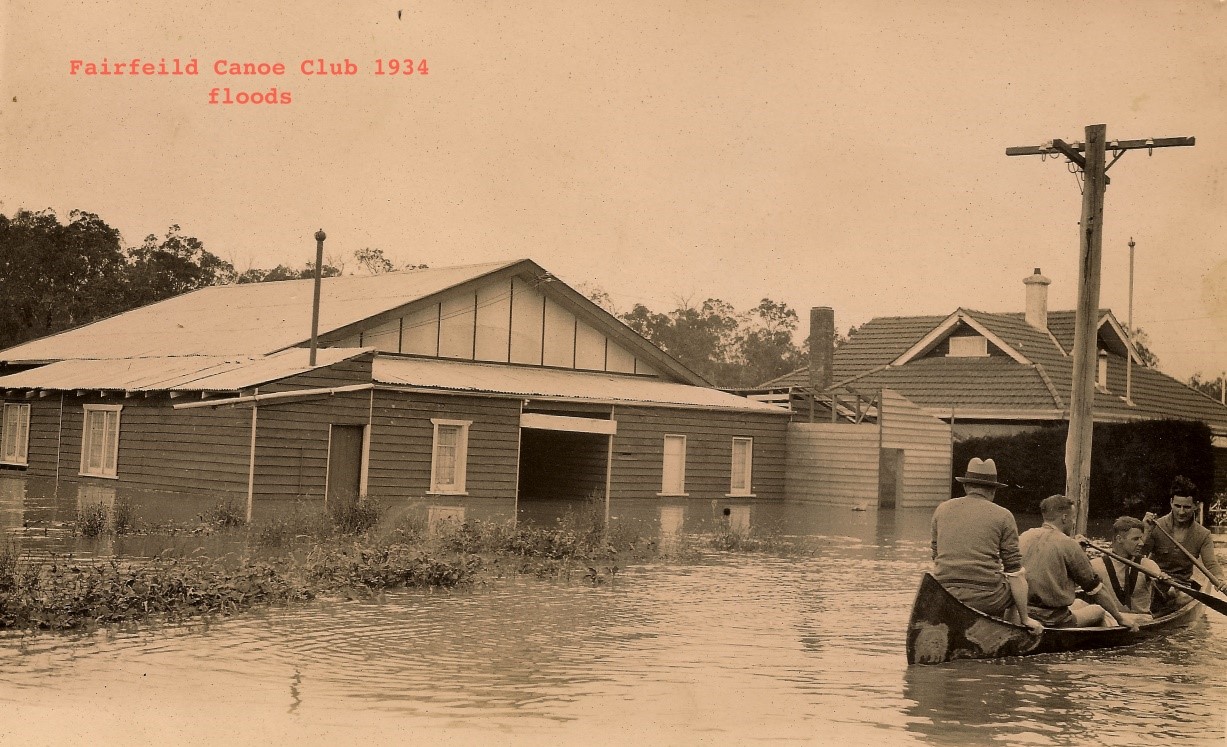
This resulted in warping of the floor which was subsequently described as having a ‘bow’ with slopes to the side. Not only was the fabric of the building damaged but numerous club records, competition pennants and trophies were lost as well.
As the water receded, the inundated canoe storage area underneath the dance floor reappeared. Apparently boats were undamaged but the contents of club member lockers revealed a problem for future picnics… All the labels on the canned food had floated away leaving behind tins of ‘unknown’ food!
The 1956 Olympics & Their Impact on Fairfield Canoe Club
The awarding the 1956 Olympic Games to Melbourne had an immediate effect on the sport of canoeing in Australia. For the first time, we would enter a team in the Games – even though paddling events had been introduced in 1936. Of greater interest was the arrival of the kayak events. This craft had not been seen much in Australia, but in the 12 months prior to the Games, many kayaks were imported and built. Surf skiers from the northern states were successfully applying their paddling skills to flatwater kayaking.
Fairfield Canoe Club became actively involved in the build-up to the Games. Tom Ohman won selection for the C2 1000m and 10,000m events, which were held on Lake Wendouree, Ballarat. Several other club members were selected as reserve paddlers, while a few more were selected as officials. The Club also went to great expense to purchase an Olympic canoe for £150, and committee minutes record arguments surfacing as to whom within the Club had permission to paddle this special canoe.
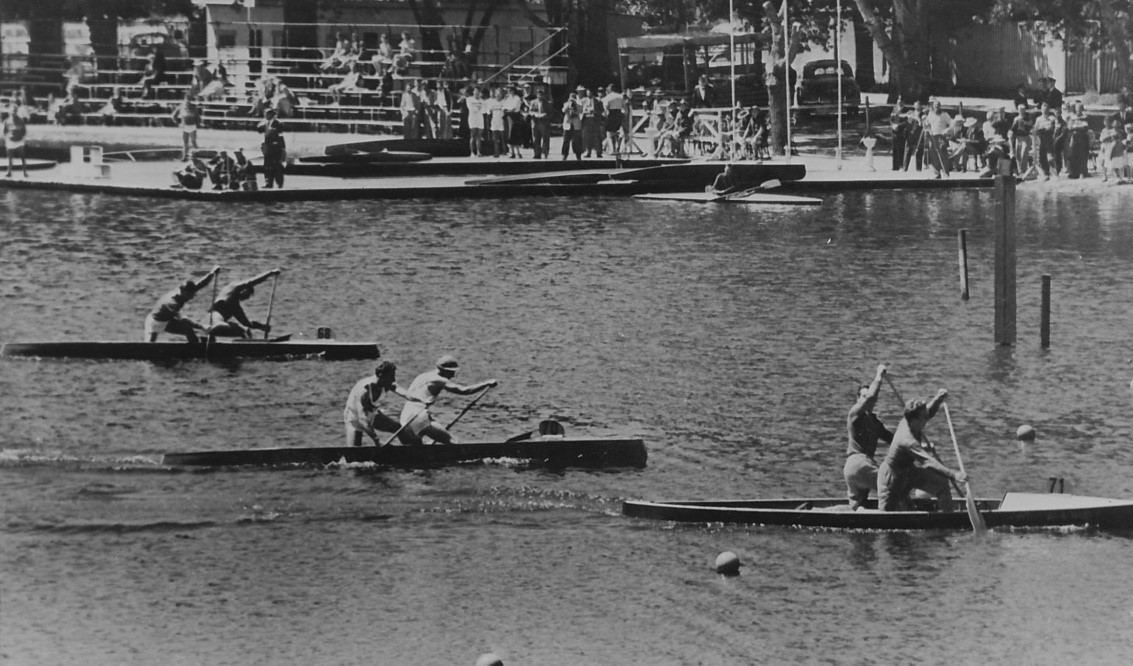
Not only did we discover kayaks and gain Olympic representation, but we also learned about the Hungarian Revolution, which occurred just a month prior to the 1956 Olympic Games. This had a significant impact on both Fairfield Canoe Club and paddling state-wide. Due to the civil uprising in Hungary, a number of Olympians defected from their team – Zoltan ‘Zoli’ Szigeti being one of them. Zoli, a world champion kayaker, found his way to FCC, and a significant number of his compatriots followed, with an immediate impact on the talent and competitive paddling ethos at the Club. A number of other of new Australians joined the club as a result. This injection of European paddlers certainly raised the profile of Fairfield Canoe Club.
Fairfield Canoe Club Olympians
| Year | Name | Event |
| 1956 | Tom Ohman | C2 1000m, C2 10,000m |
| Zoltan Szigeti (Hungary) | K2 1000m | |
| 1960 | Adrian Powell | C1 1000m (semi-final) |
| Heidi Sager | K1 500m (semi-final, 4th) K2 500m (semi-final) | |
| Ivan Gaal | C2 selected but unable to compete | |
| 1964 | Adrian Powell | K2 (final, 8th) |
| Marg Buck | K1 500m (final, 9th) K2 400m (semi-final) | |
| Fred Wasmer | C1 1000m (semi-final) C2 1000m (semi-final) | |
| Vid Juriskay | C2 1000m (semi-final) | |
| 1968 | Adrian Powell | K1 1000m (semi-final) K2 1000m (semi-final) |
| 1972 | Adrian Powell | K2 1000m (semi-final) |
| 1976 | Adrian Powell | K2 1000m (semi-final) |
| 1984 | John Doak | K4 1000m (final, 7th) |
Since the heady days of the Melbourne Olympics, Fairfield Canoe Club members have competed at all levels across the breadth of events.
The 1960s
The Red Cross Murray Marathon
The inaugural Murray River Canoe Marathon was held in 1969. The idea of Mark Thornthwaite was to create a fundraiser, with the race entailing paddling 404 km over five days.
Over the decades since this first race, ‘The Murray’ has become very popular for a wide range of paddlers at the Club, with members entering full distance events or the very popular relay teams (schools and mixed crew). This popularity for the ‘Murray’ brought many new members to FCC.
Jonathon Mayne observes that ”over the decades the Red Cross Murray Marathon had a profound effect on canoeing in Australia, attracted some of the best paddlers in the world and ramped up paddling standards across the nation”. Many of the records for this event are still held by teams and individuals from Fairfield Canoe Club
Despite the many differences (boats, paddles, communications etc.) some things remain unchanged in the ‘Murray’: 404 km to paddle with the inevitable blistered hands, sore backsides and unfriendly weather conditions. It has become a ‘mountain peak experience’ in the lives of so many.
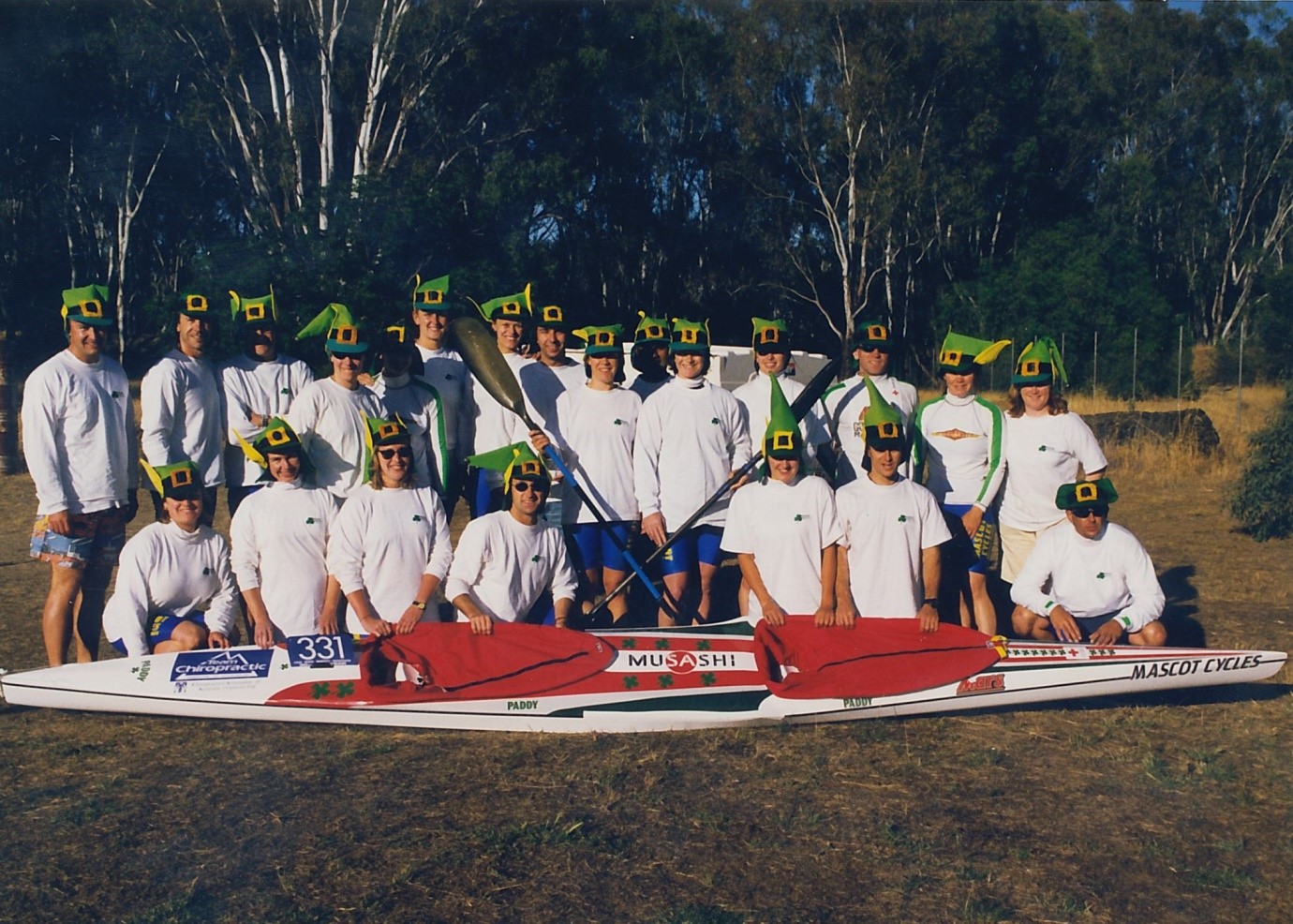
The 1970s
The Winter Marathon Series
The earliest days winter were a time of “activity around the canoe sheds, canoes are changing their colours, and being cleaned up, brasswork is shining, and things are looking bright for the season”. If a group ventured out for a paddle they would likely “return to the Clubhouse for tea, and what fun can be had, too. All that is required is the gramophone or wireless, and a splendid dance can be enjoyed”. (H. De La Rue. Nov 1925 ”Water Sports”)
Even in the training notes written by Zoli Szigeti in 1966, winter-time was still seen as a period of non-paddling activities such as “walking, table tennis, squash, swimming, any light sports etc”.
After the arrival of the Murray Marathon event in 1969, distance paddlers wanted to have a competition to keep up their levels of fitness in the long months between Murray Marathons. Thus the Victorian Amateur Canoe Association introduced the Winter Marathon Series in 1979.
Although FCC won the inaugural season, the Club was not a keen supporter of these races. This all changed in 1993 when we fronted-up with 25 competitors. The Winter Marathon Series trophy was won easily by FCC! This also changed the culture around the Club with all levels of paddlers encouraged to participate, often having 40 paddlers in a race. Club dinners at country races were a highlight. The period ’93 –’99 saw six victories to FCC.
More recently, our rivals downstream on the Yarra, Ivanhoe-Northcote Canoe Club (INCC), have seemingly bolted this trophy to their clubhouse wall. However this year Fairfield has regained this trophy. What could be more appropriate for a hundredth birthday?
Recently there has been increasing interest in the Canoe Polo events with FCC very actively and successfully involved in this team event. Our paddlers being selected for various Australian canoe polo teams.
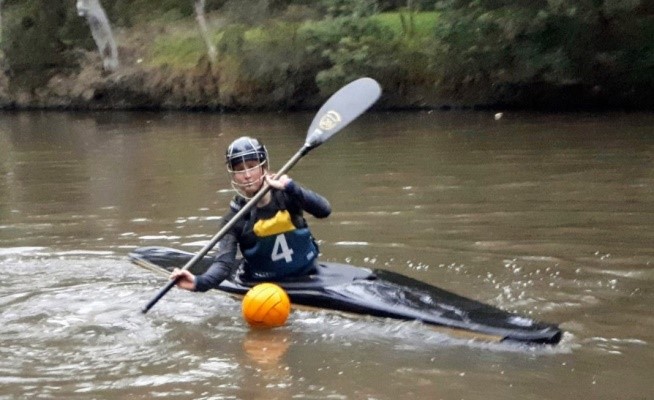
Troubled Times
This all reads well but it has not all been plain sailing for the Club and our clubhouse.
Just as the level of the Yarra rises and falls, so the financial viability of the Club has fluctuated. The heady days of the Club in 1920s wavered in the Great Depression, and the continuation of the Club was only achieved by co-habitating with the newly formed Northern Districts Rowing Club in 1933.
Immediately post-war, the Club was again in trouble. Sidney Panther Timbers and Porta Timbers essentially owned the Club through their 1924 debentures holdings but when approached they agreed to relinquish these at no cost – which saved the day.
Much later, in the 1970s, major financial storm clouds were approaching as the clubhouse was becoming derelict and active membership had dwindled to only 10 to 15 – which was in part due to the state of the clubhouse. Joe Alia recalls, “We were having a meeting at the old clubhouse, all sitting around the table, and the roof was leaking onto the meeting table – and it was possum piss. We all said, “That’s it, we can’t have this anymore”, so we got moving”. And move they did, as there was word of an imminent demolition order to be issued by council. It was decided to draw up plans to rebuild the clubhouse and a building permit for a ‘giant’ A-frame was quickly applied for.
This did not resolve the financial burden of rebuilding so it was decided that the Club should become a cooperative with a minimum membership of 50, each member paying a $1000 joining fee. However, to incorporate, the land title was needed and this was a problem as the families of the 1924 trustees still held the title. The wife of the last trustee to die was located, and she handed the title deeds over to the Club.
Unfortunately only 27 members joined up at this time, so it took more than three years of fundraising to get a roof for the A-frame in place. Once again it was the efforts of club members that largely provided the finance and also the workforce to build this new clubhouse.
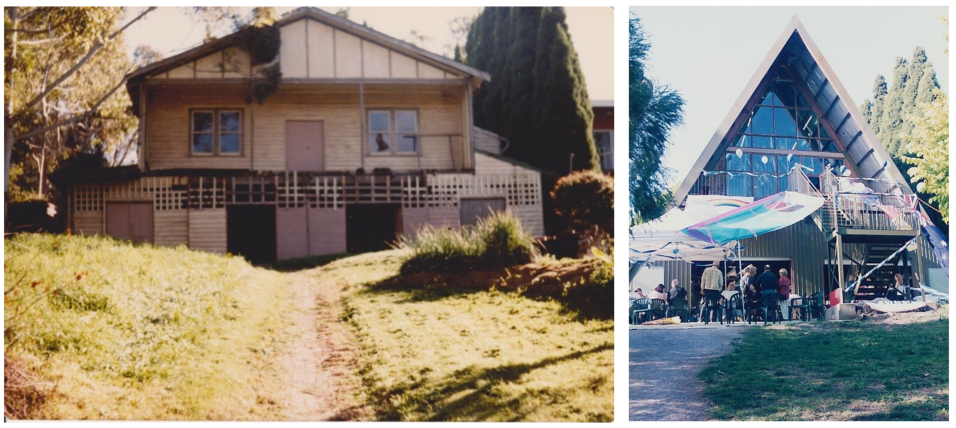
It was not until 2000 when the club membership was restructured into a cooperative with share-holding that the influx of money facilitated the installation of two bathrooms and a kitchen. In 2009 the club landing was rebuilt. For the first time since the late 70s, FCC had a fully functioning club house.
Zoli Sessions
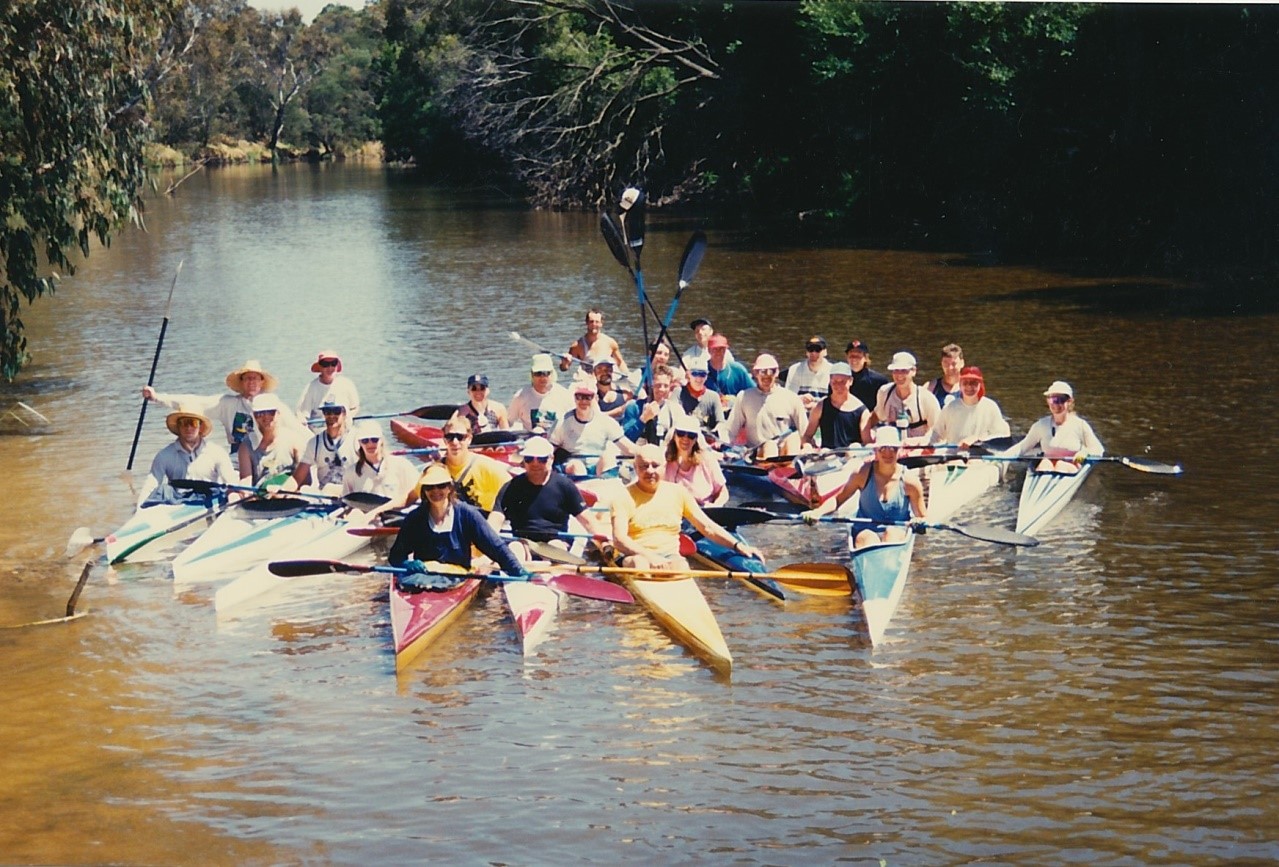
Zoli Szigeti continued to run Sunday morning beginner classes and the ever popular ‘Zoli sessions’ until his death in 2009, signalling the end of a great era. The teaching void was taken up by a roster of experienced paddlers to support junior and beginner classes held on most weekends.
School Involvement
School involvement and membership has also injected vital young people into our Club. The earliest association with a school dates back to the 1930s, when it was noted in local press that the Northern Districts Rowing Club was recruiting new members from Northcote High School.
While there have always been school-age members in the Club, the next formal association was made in 1996, when Trinity Grammar School recognised canoeing as a school sport. The Club offered the use of its facilities, including club boats, and Zoli Szigeti became the volunteer coach for the group. In 1997, Trinity boys started competing in the Murray Marathon Schools Relay. This resulted in a significant influx of members, with both parents and their boys involved in competition as well as management committees. Trinity boys are now financial members of the Club and have a fleet of their own boats.
The next school to join FCC was Strathcona Girls Grammar, and in 2016 we made a connection with the environmental studies programme at Fitzroy High School, with these students being introduced to both paddling and the environmental impact of storm water rubbish on the Yarra. This endeavour involves club members, school and council staff and continues to date.
Fairfield Canoe Club Today – 100 Years On
Should they paddle those 500 yards upstream from their first home at the Heidelberg Boathouse at Fairfield Park all those years ago, our founding paddlers of 1919 would be proud of what they would find at 9 The Esplanade, Alphington.
Fairfield Canoe Club has weathered numerous floods, World War II, the Great Depression and a varying interest in the sport of canoeing/kayaking.
Today we have a strong club of 300 members (34% female) all of whom are shareholders in an incorporated co-operative that is financially stable and housed in a first-rate clubhouse.
A Club that has members ranging from eight to eighty years, and many club boats for all to share. A Club that provides opportunities to pursue the full gamut of paddling endeavours, both competitive and social.
Come and visit us, either at the clubhouse or through our website: fairfieldcanoeclub.org.au.
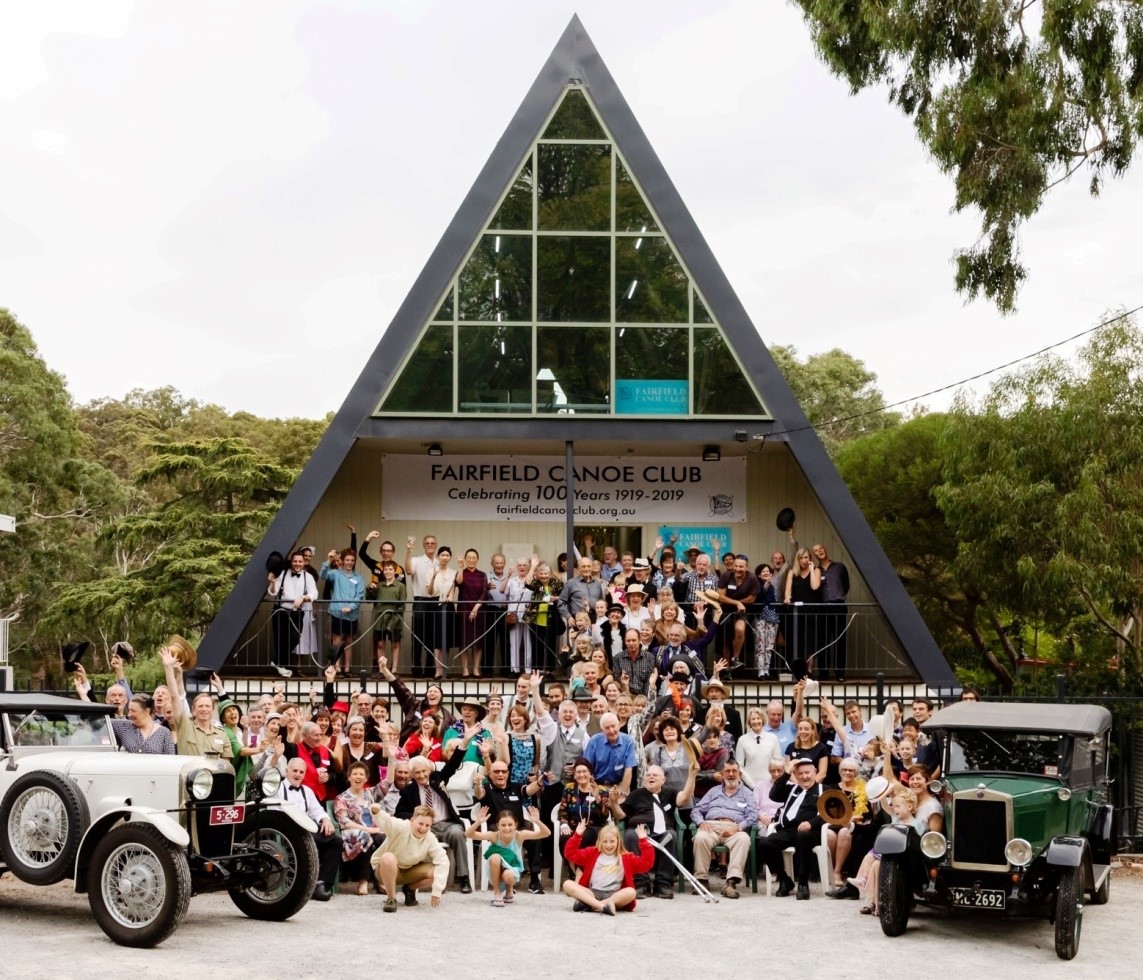
As part of the Centenary celebrations held earlier this year, over 100 photographs were on display at FCC. We have put most of these photographs and our club history snippets on our photo gallery in the History Section of the website.
Please Contact Hamish Ewing if you have any information, photographs, memories, articles or objects relating to our club history. We would love to hear from you.
Question
“Is the Fairfield Canoe Club the oldest continuous canoe club in Australia? Can any of the Paddle Australia readership beat our documented 100 years?”






